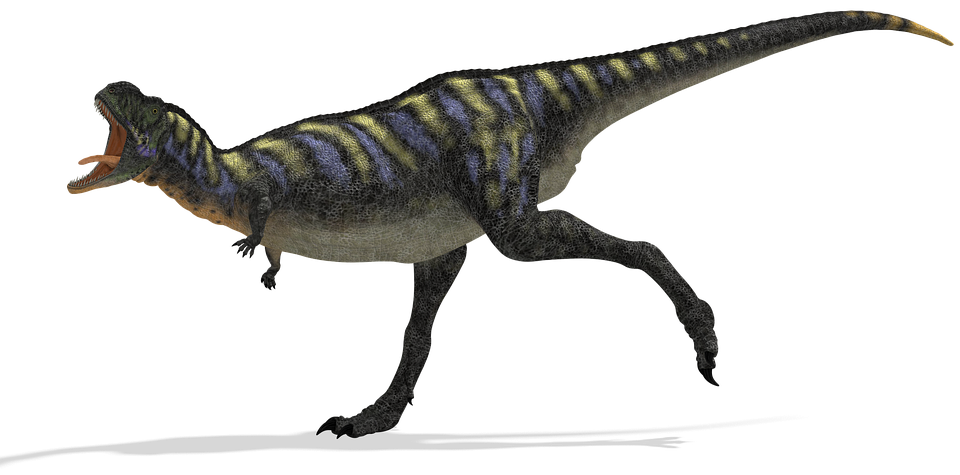Dino-discovery: Small T-Rex ancestor found in Utah
07/10/2019 / By Edsel Cook

Researchers recently discovered the fossil remnants of an ancestor of the Tyrannosaurus rex. Unlike the star of Jurassic Park, this so-called “harbinger of doom” measures less than a third of the “king of tyrant lizards.”
Moros intrepidus lived in Utah 97 million years ago. It only weighed 180 pounds and stood as tall as a mule deer. Despite its small size, researchers say it deserved its Latin name of “harbinger of doom” because they believe that Moros gave rise to the T. rex 14 million years down the line.
Unlike its descendant, Moros was not the apex predator of North America. That honor went to the larger allosaurs, which may have preyed on Moros.
The first tyrannosaurs appeared 150 million years ago. Before the discovery of Moros, researchers puzzled over the 70 million years between their appearance and the earliest known T. rex.
Moros appeared to be the evolutionary midpoint of tyrannosaurs. It might be the key as to how tyrannosaurs displaced allosaurs from the top of the North American food chain. (Related: Bee smarts: Scientists discover the insects can do basic math.)
The ancestor of the T-Rex is the size of a mule deer
Researchers from the North Carolina State University (NC State) explained that M. intrepidus lived during the wane of the allosaurs. Furthermore, the small tyrannosaur served as the evolutionary start of the T. rex.
Experts believed tyrannosaurids remained small for 15 million years. However, they took a mere 16 million years to hulk up into the iconic prehistoric predator.
T. rex was one of the largest carnivores to terrorize the Earth. Fossil records suggest that it grew to heights of 20 feet (6 m) tall and spanned 40 feet (12 m) from nose to tail. The latest studies suggest that it weighed nine tons.
“With a lethal combination of bone-crunching bite forces, stereoscopic vision, rapid growth rates, and colossal size, tyrant dinosaurs reigned uncontested for 15 million years leading up to the end-Cretaceous extinction – but it wasn’t always that way,” explained NC State researcher Dr. Lindsay Zanno. “Early in their evolution, tyrannosaurs hunted in the shadows of archaic lineages such as allosaurs that were already established at the top of the food chain.”
Her team found the fossilized remains of M. intrepidus in Utah. During the Cretaceous period, the dry state was a verdant delta.
Primitive tyrannosaurs first appeared in North America during the Jurassic period 150 million years in the past. They only reached medium sizes and were dwarfed by allosaurs.
By the dawn of the Cretaceous period 70 million years later, the allosaurs were long extinct. Meanwhile, the tyrannosaurids evolved into the far bigger T. rex.
Great things start from small beginnings
Zanno and her team sought to find out when tyrannosaurs started their rise to dominance. They also wanted to figure out how long it took for the dinosaurs to get to the top.
The NC State researchers spent a decade in Utah dig sites. They came across a hind limb and teeth in rocks that dated back to the beginning of the Cretaceous period.
Analysis of the bones indicated that the Moros specimen was more than seven years old when it perished. It also appeared to be close to its adult size.
Zanno theorized that Moros behaved far more like a dromaeosaur – also known as the Velociraptors of Jurassic Park – than the T. rex it eventually evolved into. The small tyrannosaur was much lighter and moved faster than the bulky allosaurs.
“Although the earliest Cretaceous tyrannosaurs were small, their predatory specialisations meant that they were primed to take advantage of new opportunities when warming temperatures, rising sea-level and shrinking ranges restructured ecosystems at the beginning of the Late Cretaceous,” Zanno explained. “We now know it took them less than 15 million years to rise to power.”
Sources include:
Tagged Under: animals, Archaeology, cool science, Dinosaurs, discoveries, Evolution, fossils, Moros intrepidus, prehistoric, research, T-Rex, tyrannosaurs, Tyrannosaurus rex
RECENT NEWS & ARTICLES
COPYRIGHT © 2017 RESEARCH NEWS



















